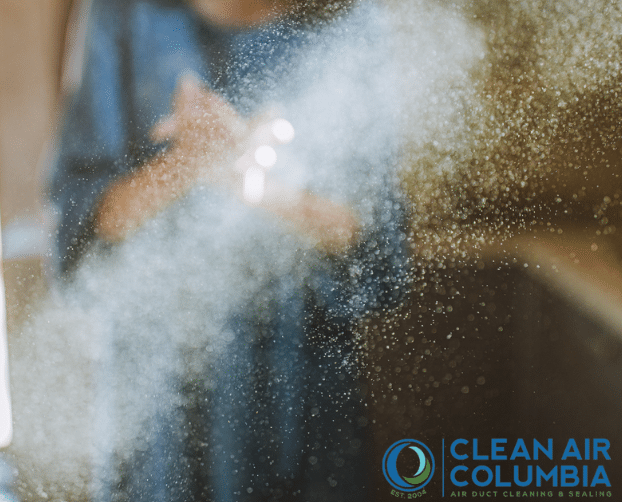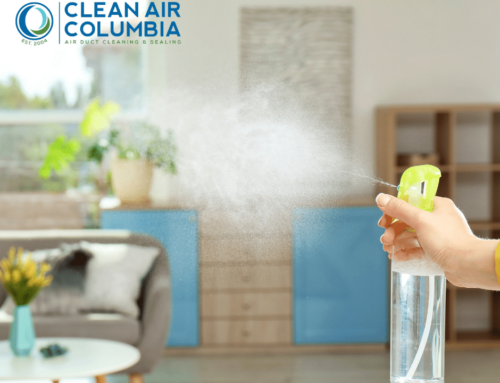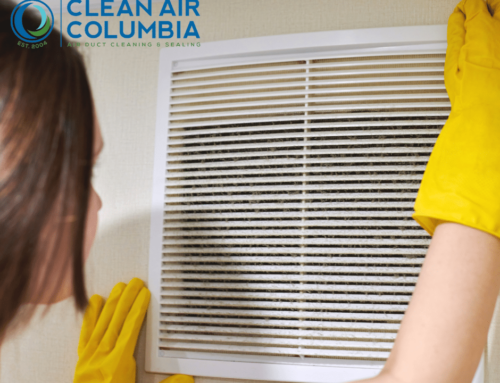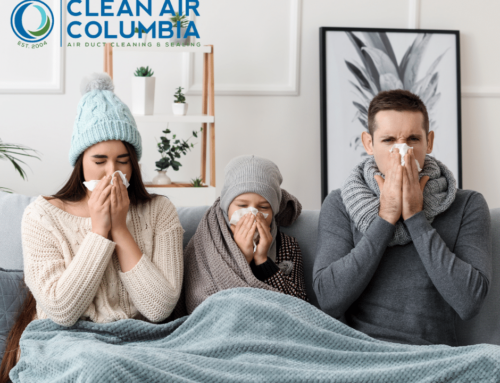Common indoor pollutants.
In the hustle and bustle of modern life, we often focus on the external environment when it comes to pollution. However, what about the air we breathe within our homes? Indoor air quality (IAQ) is a crucial aspect of overall health and well-being, yet it’s often overlooked. Unbeknownst to many, common indoor pollutants can lurk within our living spaces, affecting our health in subtle yet significant ways. In this blog, we’ll delve into some of the most prevalent indoor pollutants – dust, mold, pet dander, and volatile organic compounds (VOCs) – and explore strategies to identify and mitigate their impact on the air quality in your home.
Dust: The Silent Intruder
Dust is an omnipresent indoor pollutant made up of particles such as dead skin cells, pollen, textile fibers, and other debris. While it may seem harmless, dust can aggravate respiratory conditions like asthma and allergies. Dust mites, microscopic creatures that thrive in dusty environments, further exacerbate the issue. Regular dusting and vacuuming, along with using high-efficiency particulate air (HEPA) filters in vacuum cleaners and air purifiers, can significantly reduce dust levels in the home.
PRO TIP: If you find yourself having to dust more often, you may want to consider air duct cleaning.
Mold: The Unseen Threat
Mold spores are another common indoor pollutant that may have health implications. Mold thrives in damp, humid environments and often lurks in poorly ventilated areas such as bathrooms, basements, and attics. Mold exposure can trigger allergic reactions and respiratory problems. Regularly cleaning and inspecting susceptible areas can also help prevent mold infestations.
PRO TIP: Maintain proper ventilation, control moisture levels, and promptly address any water leaks or damage.
Pet Dander: Furry Friends, Hidden Hazards
For many of us, pets are beloved members of the family. However, their presence can contribute to indoor air pollution by shedding dander, saliva, and fur. Pet dander, in particular, is a common allergen that can exacerbate respiratory issues and be circulated through your home via your HVAC system. To minimize pet-related pollutants, pet owners should groom their pets regularly, bathe them as appropriate, and designate pet-free zones within the home, such as bedrooms. Additionally, using HEPA filters in your HVAC system can help trap pet dander particles and stop them from traveling through your air ducts.
PRO TIP: Pet owners should change HVAC filters once a month.
Volatile Organic Compounds (VOCs): The Invisible Culprits
VOCs are a diverse group of chemicals emitted as gasses from various household products, including paints, cleaning supplies, furniture, and building materials. Prolonged exposure to VOCs can lead to a range of health problems, including headaches, dizziness, and respiratory irritation. Opt for low-VOC or VOC-free products to reduce VOC levels indoors indoors. Proper ventilation is also crucial for dissipating VOC emissions.
PRO TIP: Incorporating indoor plants, such as peace lilies and spider plants, can help absorb VOCs and improve IAQ.
Maintaining healthy indoor air quality requires vigilance and proactive measures to identify and mitigate pollutants. Use this checklist to create a healthier indoor environment for you and your family.
-Schedule an air duct cleaning
-Regularly dust & vacuum
-Open windows for ventilation
-Use HEPA filters
-Air purifiers, humidifiers, dehumidifiers
-Choose low-VOC products
Call us today to schedule your Air Duct Cleaning: )573) 489-8303






Leave A Comment
You must be logged in to post a comment.